KEG: Post II
12. 0-0 Bh3?
This only helped Krapinski in his efforts to recover. The simple 12...Qxe3+ would leave White pretty badly busted. 13. Rf2 Qxe3
He could also have played 13...Qxe5. Black is still probably winning, but White now has some chances. 14. Qd2 Qb6
Hardly best. Delmar should have played 14...d4 or 14...QxQ. After the text, the position was:
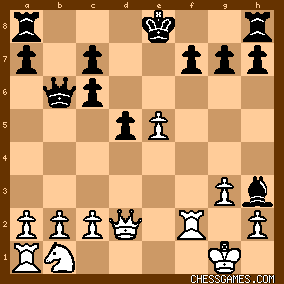
click for larger view15. c3?
Badly weakening his Queen-side. Karpinski would still have had some play with 15. b3. 15... 0-0
16. Qd4 Rae8
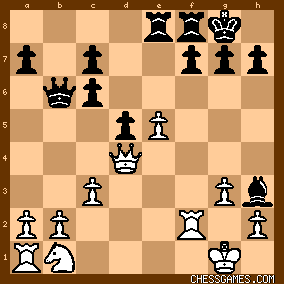
click for larger view17. Na3?
Another poor effort. 17. Nd2 Qxb2 18. Nb3 Qa3 19. Qh4 Bc8 20. Qb4 QxQ 21. bxQ would lead to a lost ending, but it was better than the text. But now Karinski got lucky. 17... Be6?
17...Re6! would have pretty much left Delmar without resource. But after the text, the position was: 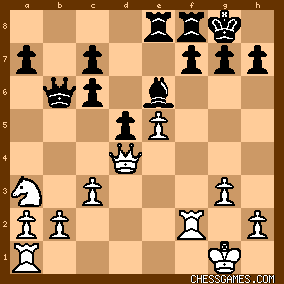
click for larger view18. QxQ?
Just awful. After Delmar's last move, Karpinski would have had interesting play with 18. b4. But now he got a hopeless ending down a pawn and never really had any real chances to save the game after this. 18... axQ!
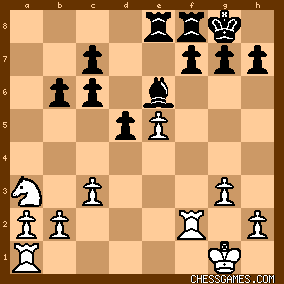
click for larger viewThe text was much better than 18...cxQ. Now, in addition to his extra pawn, Delmar had a half-open a-file on which to operate plus pressure on Karpinski's weak, isolated e-pawn. Resignation would not have been premature here, but given Delmar's faltering play in what follows Karpinsiki's decision to play on does not look too bad. 19. Nc2 c5
20. Re1
20. Rd2; 20. a4; or even 20. b4 were better, though with proper play by Black it should not make much of a difference. 20... Rd8
20...Re7 or 20...Bd7 or 20...Ra8 were stronger. The text didn't accomplish much, but Delmar's game still was a clear win. But to the extent Delmar was planning an upcoming d4, his forthcoming play made a mockery or 20...Rd8. 21. Rf4
Yet another hopeless move by Karpinski. 21. b4 or 21. Rd2 or even 21. b3 would have been better. 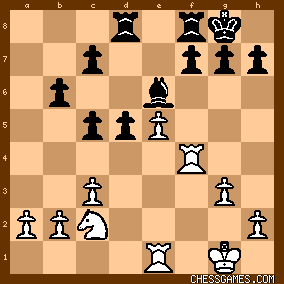
click for larger view21... Rd7
He could have played 21...d4! or, alternatively, tried another good plan with 21...Rfe8. The idea of doubling Rooks on the d-file was hardly best play. 22. Rd1 Rfd8
Continuing with his doubtful plan and missing another opportunity to play d4. After the text, the position was: 
click for larger view | 




